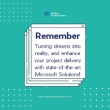As a busy executive, you’re likely no stranger to the challenges of balancing your professional and personal life. But achieving work-life harmony isn’t just about managing your time effectively—it’s about integrating your personal values and well-being into your daily activities.
To start, take a step back and assess your current balance. Are you consistently working long hours without taking breaks? Are you neglecting self-care activities that help you relax? By setting clear boundaries and prioritizing your well-being, you can begin to create a more sustainable and fulfilling lifestyle. So, what’s the first step you’ll take to reclaim your balance?
Setting Boundaries for Success
Beginning with clear expectations is essential. As an executive, you need to establish boundaries to protect your personal time and maintain a healthy work-life harmony. This isn’t just about setting limits on work hours, but also about being mindful of how technology can blur the lines between work and personal life.
Constant access to emails and notifications can make it difficult to disconnect, leading to chronic stress and burnout.
To set effective boundaries, you must communicate your expectations to colleagues, subordinates, and family members. This includes setting limits on your availability, defining work hours, and having dedicated time for relaxation and personal activities.
Learning to say no to additional responsibilities that don’t align with your personal priorities is also vital.
Time Management Essentials
Effective time management is a cornerstone of work-life harmony for executives. As a busy executive, you need to prioritize your tasks, manage your schedule, and minimize distractions to achieve your goals. Research shows that executives who master time management techniques are more productive, less stressed, and better equipped to handle the demands of their role.
To manage your time effectively, you should start by identifying your most important tasks and scheduling them first. Use tools like the Eisenhower Matrix to categorize tasks into urgent vs. important and focus on the most critical ones.
Set clear boundaries with your team and stakeholders to protect your time and avoid overcommitting. Consider blocking time in your calendar for focused work and scheduling breaks to recharge.
Additionally, learn to delegate tasks to your team members to free up your time and focus on high-priority tasks. By implementing these strategies, you can achieve a better work-life balance and improve your overall productivity and well-being.
Prioritizing Personal Well-being
Prioritizing personal well-being is essential for achieving work-life harmony as an executive. When you’re physically, mentally, and emotionally healthy, you’re better equipped to handle the demands of your role, lead effectively, and foster a positive work culture. Neglecting your well-being can lead to burnout, decreased productivity, and serious health issues, ultimately impacting your career and organization.
To prioritize your well-being, start by scheduling self-care activities into your calendar, just as you’d any work-related task. This might include exercise, meditation, or simply taking time to relax.
Additionally, set boundaries to maintain a healthy work-life balance. Use your calendar to block off time for personal and social commitments, ensuring that you have time for yourself and your loved ones outside of work.
Research shows that executives who prioritize their well-being not only benefit personally but also become better leaders, fostering healthier, more productive teams. By prioritizing your well-being, you set a positive example for your employees and contribute to a more balanced and sustainable work environment.
Regularly evaluating and adapting your wellness strategies will help you address evolving needs and challenges, ensuring long-term career success and overall well-being.
Delegation Techniques for Leaders
For leaders to achieve work-life harmony, mastering delegation techniques is fundamental. Effective delegation not only helps distribute workload, but it also fosters growth and development within your team. Knowing what to delegate is imperative. Tasks that are repetitive, require specific skill sets that others possess, or are aligned with team members’ professional goals should be delegated.
This approach not only boosts efficiency but also motivates employees by leveraging their strengths and providing opportunities for skill development.
To delegate effectively, you need to choose the right person for the task, considering their strengths, weaknesses, and preferences. Providing clear instructions, context, and the necessary resources is also essential. Define the desired outcome and the metrics for success, ensuring that everyone is on the same page regarding expectations and timelines.
Trust is another key component. Building trust within your team is fundamental for delegation to be successful. Trust in both your people’s capabilities and the organizational processes that support them is imperative.
Saying No Without Guilt
Saying no without guilt is a crucial skill for executives aiming to achieve work-life harmony. As a leader, you’re often bombarded with requests from colleagues, clients, and superiors, which can lead to overcommitment and burnout.
However, learning to say no effectively can help you manage your workload and maintain a healthy balance between work and personal life.
Research suggests that people often feel guilty saying no due to deep-seated beliefs about wanting to fit in or avoid conflict.
However, it’s important to understand that saying no doesn’t mean you’re being selfish or hurtful. Instead, it means you’re prioritizing your own needs and boundaries.
To say no without guilt, start by paying attention to how others react to your refusal. You’ll find that most people accept no as a common part of professional interactions.
Assert your boundaries clearly by identifying what you want and communicating it confidently.
Practice saying no graciously by being honest, concise, and without justification.
Remember, saying no isn’t about apologizing but about standing firm on your priorities.
Continuous Learning Strategies
Continuous learning is an essential part of maintaining work-life harmony for executives. As a key leader, you must stay up-to-date with the latest trends and technologies in your industry to make informed decisions and navigate complex challenges effectively.
Engaging in continuous learning helps you refine your skills, adapt to rapid changes, and foster a culture of innovation within your organization. By embracing continuous learning, you can improve decision-making capabilities, address skill gaps, and inspire your teams to adopt a similar growth mindset. This not only enhances your personal growth but also supports the development of your organization.
To cultivate continuous learning, consider strategies such as dedicating time for learning, seeking feedback, engaging in formal education, and fostering a learning culture within your organization.
By integrating these practices into your routine, you can guarantee that learning becomes a non-negotiable part of your professional life, ultimately contributing to better work-life balance and more effective leadership.
Regular assessment of your learning goals and progress is also vital to guarantee continuous growth and improvement.
Maintaining Health and Wellness
Maintaining health and wellness is frequently overlooked by busy executives, yet it’s vital for their overall well-being and effectiveness in their roles. As a busy executive, you often prioritize work over personal health, which can lead to burnout, decreased productivity, and long-term health issues.
Research shows that 40% of working professionals experience significant negative stress due to their jobs, emphasizing the need for work-life balance.
To maintain health and wellness, it’s important to incorporate physical activity into your daily routine. Even small, time-efficient workouts like high-intensity interval training (HIIT) or mindfulness practices can have substantial benefits.
Scheduling these activities in your calendar guarantees consistency and minimizes the likelihood of neglecting your health. Additionally, managing stress through mindfulness and meditation can enhance cognitive function and overall well-being.
By prioritizing health and wellness, you can improve your energy levels, reduce the risk of chronic diseases, and maintain a sustainable work-life balance. Effective health management isn’t just a personal benefit but also a key business strategy for long-term success and performance.
Communication Skills
Effective communication skills are essential for busy executives to navigate both personal and professional relationships efficiently. As an executive, you need to communicate effectively with your team, stakeholders, and senior management to achieve your goals and maintain a healthy work-life balance.
Research has shown that effective communication is vital for building trust, increasing productivity, and reducing stress.
To communicate effectively, you must be clear, concise, and empathetic. This means being able to articulate your thoughts and ideas in a way that’s easily understood by your audience.
It also involves listening actively and responding thoughtfully to the concerns and needs of others. Additionally, using visuals such as flowcharts, graphs, and infographics can help to clarify complex information and enhance understanding.
Embracing Flexibility at Work
Flexibility is a cornerstone for achieving work-life harmony as an executive. It means recognizing that your work and personal life can’t be rigidly separated and being adaptable to meet the demands of both. By embracing flexibility, you can better manage your time, reduce stress, and improve your overall well-being.
Research shows that executives who’ve flexible work arrangements experience higher job satisfaction and lower levels of burnout. This can be achieved by setting your own schedule, working remotely, or adjusting your work hours to accommodate personal needs. For example, you might start your day earlier to have more time with your family in the evening or take breaks during the day to attend to personal errands.
To implement flexibility effectively, establish clear boundaries and communicate them to your team and family. Use technology to your advantage by setting reminders and automating tasks where possible.
Integrating Work and Life
Executives’ personal and professional lives are deeply intertwined, making it essential to integrate work and life seamlessly. This integration isn’t about strictly dividing work from personal life but acknowledging their interconnectedness and managing them holistically.
The traditional concept of work-life balance often emphasizes creating distinct boundaries, but work-life integration suggests a more fluid approach. It involves aligning your work and personal activities with your values and goals, allowing for flexibility and mutual support between these two spheres.
To achieve this integration, executives must be intentional about setting boundaries and managing their time effectively. This includes prioritizing tasks, delegating responsibilities, and practicing self-care to prevent burnout.
It’s also vital to maintain open communication with family, friends, and colleagues about your needs and expectations. Additionally, leveraging technology and flexible work arrangements can help facilitate this integration by allowing executives to manage their responsibilities more efficiently and flexibly.
Conclusion
Your path to achieving work-life harmony as a busy executive hinges on several critical strategies. By setting clear boundaries, managing time effectively, prioritizing personal well-being, and embracing flexibility, you can create a sustainable balance between your professional responsibilities and personal life. Delegation, learning to say no, maintaining health and wellness, and effective communication are also essential tools. Integrating these strategies into your daily routine will not only enhance your job satisfaction but also bolster your overall effectiveness and well-being.























